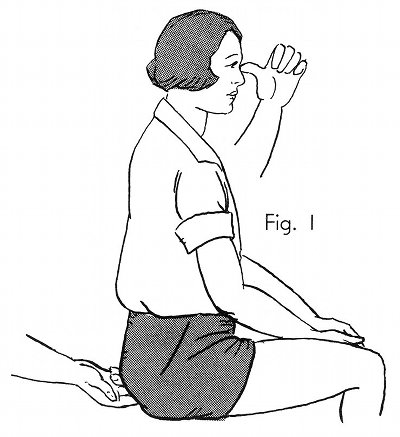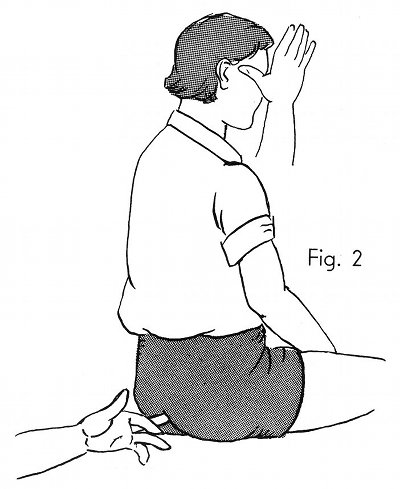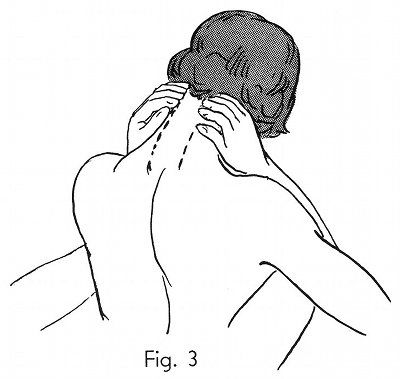|
Index of Transcribed Charts
Supplemental Essays
Contact Us
Acknowledgements
"Bumper Sticker" Quotes
Support DigitalDrStone!This site is a free service for Polarity Therapy practitioners, students and teachers, with the intention of expanding Polarity Therapy by making it more accessible. It is owned and operated by a non-profit organization, EnergySchool Foundation, with the support and permission of numerous other individuals and corporations as described in the Acknowledgements section. Please consider making a tax-deductible donation to support our continued presence by using this Paypal button to send a contribution.
Winner of the APTA "Outstanding Service Award" 2012
|
Polarity Therapy Volume 2, Book 5
Chart No. 16 - Balancing Sphenoid and Coccyx Vital Currents

A neuter [neutral] contact at the root of the nose, for the superior anterior pole through the sphenoid, the ethmoid & the nasal bones.
The inferior contact is made with the middle, positive finger of the other hand on the tip of the coccyx.
See Chart No. 18 in this book for relationship of bony structures.
|

A lateral contact with the thumb on the right wing of the sphenoid bone. The inferior contact is made with the middle finger of the left hand, with a gentle pressure on the left side of the coccyx. When the superior contact is on the left side of the head, the inferior contact will be made on the right side of the coccyx. The lateral currents cross over, so these contacts are made on opposite sides of the body.
|

Fig. 3 shows firm finger contacts on both sides of the laminae together with a gentle stretch for tension release and current flow, without adjustment. For adjustments, see Book 2, Charts 45 to 50 [Charts No. 45, 46, 47, 48, 49, 50].
|
|
Book 5, Chart 15 ~ Book 5, Chart 17
|
|
|
American Polarity Therapy Association
Copyright 2012 EnergySchool Foundation
Text & images from Randolph Stone, Polarity Therapy Vol. I & Vol. II, CRCS PO Box 1460, Sebastopol, CA 95473
Thanks to the American Polarity Therapy Association and CRCS Publications for supporting this project.
|